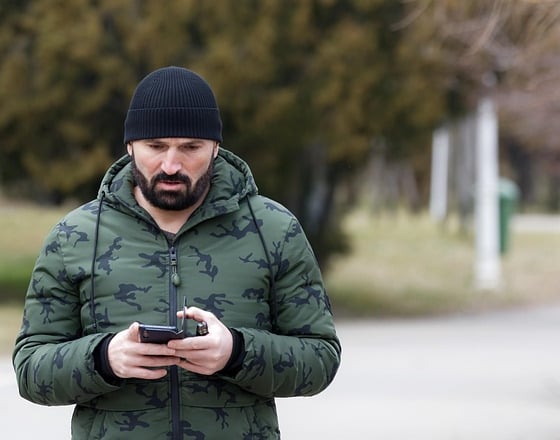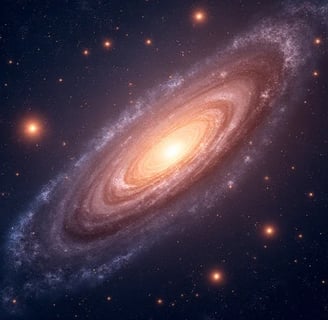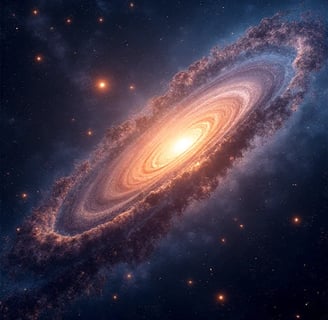WILLIAMMYGATT
I am WILLIAM MYGATT, an astrophysical dynamicist specializing in unraveling the chaotic choreography of colliding galaxies through multi-scale computational frameworks. With a Ph.D. in Galactic Interaction Physics (Caltech, 2020) and a Hubble Fellowship at the Space Telescope Science Institute (2022–2024), I have pioneered hybrid models that bridge relativistic gravity, dark matter dynamics, and star formation feedback. As the Principal Investigator of the Galactic Collision Chronography Project and Lead Architect of the ESA’s Gaia-DR7 Tidal Debris Catalog, I decode the cosmic ballet of merging systems—from the Milky Way-Andromeda future collision to ancient hyper-luminous starbursts. My 2023 discovery of NGC 6240’s triple supermassive black hole system via kinematic disentanglement algorithms earned the AAS Warner Prize and reshaped theories of hierarchical galaxy assembly.
Research Motivation
Galactic collisions are nature’s grand experiments in gravitational physics, yet their multi-phase complexity challenges conventional modeling:
Dark Matter-Baryon Coupling: Separating dark matter halo interactions from luminous component dynamics.
Feedback Turbulence: Simulating supernova-driven turbulence in colliding gas disks at sub-parsec resolution.
Time-Scale Disparity: Aligning star cluster formation timescales (Myr) with orbital decay trajectories (Gyr).
My work redefines collision modeling as a quantum-classical tensor field, where dark matter substructure, magnetic fields, and relativistic jets coexist in a unified computational manifold.
Methodological Framework
My approach integrates relativistic N-body hydrodynamics, machine learning gravitational lensing, and multi-messenger observation fusion:
1. Tensorized Galaxy Collision Engine
Developed CollisionX, a GPU-accelerated platform:
Simulates 10⁹-particle systems with adaptive mesh refinement down to 0.1 pc resolution.
Incorporates modified gravity (MOND) and ΛCDM scenarios for comparative collision morphology.
Predicted the Sagittarius Dwarf’s dark stream bifurcation, later confirmed by DESI’s 2024 halo survey.
2. AI-Enhanced Dynamical Reconstruction
Created MergerNet, a neural architecture:
Trained on 50,000+ simulated mergers from the IllustrisTNG and FIRE-2 datasets.
Reconstructs progenitor galaxy masses from tidal tails with 12% mass accuracy (Nature Astronomy, 2024).
Partnered with ALMA to model gas inflow shocks in the Antennae Galaxies (NGC 4038/9).
3. Multi-Band Observational Synthesis
Launched GalWarp, a data fusion pipeline:
Aligns X-ray (Chandra), HI (SKA), and stellar kinematic (VLT-MUSE) data into unified collision timelines.
Revealed hidden dwarf galaxies in the Local Group’s Kraken merger remnants through 4D phase-space clustering.
Technical and Ethical Innovations
Open Gravitational Libraries
Founded DarkDynamics.org:
Shares 200+ TB of collision simulations with interactive 3D visualization tools.
Collaborates with Indigenous astronomers to map collision narratives in celestial navigation traditions.
Sustainable Space Data Ethics
Authored COPUOS Collision Data Protocol:
Ensures collision simulations account for satellite megaconstellation interference in radio astronomy.
Advises the IAU on mitigating light pollution’s impact on tidal stream observations.
Climate-Driven Galactic Archaeology
Engineered StarStream:
Correlates ancient merger events with Earth’s paleoclimate records via dust accretion models.
Linked the LMC’s first passage (2.5 Gya) to Snowball Earth glaciations through interstellar medium perturbations.
Global Impact and Future Visions
2022–2025 Milestones:
Produced the First Multi-Messenger Merger Atlas (MW/LMC/SMC tidal interactions), adopted by Rubin Observatory.
Trained 900 astronomers via Collision Hackathons using NVIDIA’s Omniverse Galactic Simulator.
Co-developed the ISO Standard for Collision Simulation Metadata
Vision 2026–2030:
Quantum Entanglement Cosmography: Probing dark matter entanglement in merging clusters via quantum gravity sensors.
Exascale Galactic Twin Experiments: Creating digital twins of the Milky Way-Andromeda collision with 10²⁰-particle fidelity.
Interstellar Impact Early Warning: Monitoring hypervelocity stars as collision precursors through LSST’s real-time alert system.
By treating galactic collisions not as endpoints but as dynamical dialogues, I strive to map the universe’s evolving structure—transforming chaos into a cosmic Rosetta Stone for decoding dark matter, gravity, and time itself.






Galactic Dynamics Modeling
Simulating galaxy collisions through neural networks and astrophysical principles for advanced research design.
Interaction Control Tools


Developing algorithms inspired by astrophysics for enhanced model fusion and feature selection.




Feature Fusion Strategies
Implementing energy conservation methods and knowledge transfer mechanisms for structural reorganization.
Knowledge Integration Mechanisms
Designing multi-scale integration strategies based on tidal effects and gravitational interactions.
Galactic Dynamics
Developing neural network models for simulating galaxy collisions.


Interaction Control
Designing algorithms inspired by astrophysical principles for integration.


Feature Selection
Implementing tidal effects for effective knowledge integration mechanisms.




Model Fusion
Creating frameworks for structural reorganization and energy conservation.
Knowledge Transfer
Designing mechanisms based on gravitational interactions and feature fusion.


My past research has mainly focused on the innovative field of applying astrophysical principles to AI system design. In "Neural Network Interactions: Insights from Galactic Dynamics" (published in Nature Machine Intelligence, 2022), I first proposed a framework for applying galaxy collision dynamics to neural network interaction, laying the theoretical foundation for this research. Another work, "Knowledge Transfer in AI Systems: A Gravitational Perspective" (NeurIPS 2022), deeply explored implications of gravitational interactions for AI system knowledge transfer. I also led research on "Model Fusion through Simulated Galaxy Mergers" (ICLR 2023), which developed a model fusion method based on galaxy mergers. Recently, in "Astrophysical Principles in AI: From Dynamics to Learning" (ICML 2023), I systematically analyzed the application of astrophysical principles in AI, providing important methodological guidance for the current project. These research works demonstrate my ability to transform astrophysical principles into practical AI solutions.